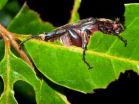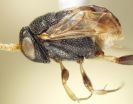(Press-News.org) Reducing or curbing just six modifiable risk factors—tobacco use, harmful alcohol use, salt intake, high blood pressure and blood sugar, and obesity—to globally-agreed target levels could prevent more than 37 million premature deaths over 15 years, from the four main non-communicable diseases (NCDs; cardiovascular diseases, chronic respiratory disease, cancers, and diabetes) according to new research published in The Lancet.
Worryingly, the findings indicate that not reaching these targets would result in 38.8 million deaths in 2025 from the four main NCDs, 10.5 million deaths more than the 28.3 million who died in 2010.
This is the first study to analyse the impact that reducing globally targeted risk factors will have on the UN's 25x25 target to reduce premature deaths from NCDs by 25% relative to 2010 levels by 2025.
Using country-level data on deaths and risk factors and epidemiological models, Professor Majid Ezzati from Imperial College London, UK, and colleagues estimate the number of deaths that could be prevented between 2010 and 2025 by reducing the burden of each of the six risk factors to globally-agreed target levels—tobacco use (30% reduction and a more ambitious 50% reduction), alcohol use (10% reduction), salt intake (30% reduction), high blood pressure (25% reduction), and halting the rise in the prevalence of obesity and diabetes.
Overall, the findings suggest that meeting the targets for all six risk factors would reduce the risk of dying prematurely from the four main NCDs by 22% in men and 19% for women in 2025 compared to what they were in 2010. Worldwide, this improvement is equivalent to delaying or preventing at least 16 million deaths in people aged 30 years and 21 million in those aged 70 years or older over 15 years.
The authors predict that the largest benefits will come from reducing high blood pressure and tobacco use. They calculate that a more ambitious 50% reduction in prevalence of smoking by 2025, rather than the current target of 30%, would reduce the risk of dying prematurely by more than 24% in men and by 20% in women.
According to Professor Ezzati, "Our findings show that achieving risk factor targets will make an essential contribution to achieving the 25×25 mortality target by accelerating the decreasing trends in mortality from cardiovascular diseases and chronic respiratory diseases, lowering mortality from lung and stomach cancers, and reversing the rising trend in diabetes mortality. Most of the benefits will be seen in low-income and middle-income countries where as many as 31 million deaths could be prevented."*
Writing in a linked Comment, Professor Rifat Atun from Harvard School of Public Health, Harvard University, Boston, MA, USA says, "With political will and leadership, the 25×25 targets are well within reach. But despite robust evidence, well-proven cost-effective interventions, and a compelling case for action made by [this study] to address risk factors for NCDs to save millions of lives, political apathy prevails. Even with much discourse, meaningful and durable action against NCDs is scarce, with little accountability to achieve the promises made and the targets set at the General Assembly in 2011. Such apathy is shown in the unacceptably low levels of overseas assistance for health allocated for NCDs, which in 2011 was a paltry $377 million, out of a total of about $31 billion of development assistance for health in 2011, despite NCDs accounting for 50% of the disease burden in low-income and middle-income countries. None of the innovative financing, which has helped so much to tackle HIV, malaria, tuberculosis, vaccine preventable diseases in children, and more recently maternal health is targeted at NCDs."
He adds, "The challenge of NCDs is less technical than political—25×25 targets can be reached to achieve grand convergence and pave the way for sustainable development. The HIV response and more recently the maternal and child health movement have shown us what is possible when there is political will, global leadership, and a mobilised civil society. The World Health Assembly and the United Nations have the opportunity to drive for coordinated global action and establish independent global and national accountability mechanisms to tackle NCDs. The moment for decisive action has come."
INFORMATION:
NOTES TO EDITORS:
The study was funded by the UK MRC (Medical Research Council).
*Quote direct from author and cannot be found in text of Article.
The Lancet: Reducing just 6 risk factors could prevent 37 million deaths from chronic diseases over 15 years
2014-05-03
ELSE PRESS RELEASES FROM THIS DATE:
Leaf chewing links insect diversity in modern and ancient forests
2014-05-03
Observations of insects and their feeding marks on leaves in modern forests confirm indications from fossil leaf deposits that the diversity of chewing damage relates directly to diversity of the insect population that created it, according to an international team of researchers.
"The direct link between richness of leaf-chewing insects and their feeding damage across host plants in two tropical forests validates the underlying assumptions of many paleobiological studies that rely on damage-type richness as a means to infer changes in relative herbivore richness through ...
Salk scientists reveal circuitry of fundamental motor circuit
2014-05-02
LA JOLLA—Scientists at the Salk Institute have discovered the developmental source for a key type of neuron that allows animals to walk, a finding that could help pave the way for new therapies for spinal cord injuries or other motor impairments related to disease.
The spinal cord contains a network of neurons that are able to operate largely in an autonomous manner, thus allowing animals to carry out simple rhythmic walking movements with minimal attention—giving us the ability, for example, to walk while talking on the phone. These circuits control properties such as ...
Which came first, bi- or tricellular pollen? New research updates a classic debate
2014-05-02
With the bursting of spring, pollen is in the air. Most of the pollen that is likely tickling your nose and making your eyes water is being dispersed in a sexually immature state consisting of only two cells (a body cell and a reproductive cell) and is not yet fertile. While the majority of angiosperm species disperse their pollen in this early, bicellular, stage of sexual maturity, about 30% of flowering plants disperse their pollen in a more mature fertile stage, consisting of three cells (a body and two sperm cells). And then there are plants that do both.
So which ...
Researchers find unique fore wing folding among Sub-Saharan African Ensign wasps
2014-05-02
Researchers discovered several possibly threatened new species of ensign wasps from Sub-Saharan Africa -- the first known insects to exhibit transverse folding of the fore wing. The scientists made this discovery, in part, using a technique they developed that provides broadly accessible anatomy descriptions.
"Ensign wasps are predators of cockroach eggs, and the transverse folding exhibited by these species may enable them to protect their wings while developing inside the cramped environment of cockroach egg cases," said Andy Deans, associate professor of entomology, ...
Probing dopant distribution
2014-05-02
The icing on the cake for semiconductor nanocrystals that provide a non-damped optoelectronic effect may exist as a layer of tin that segregates near the surface.
One method of altering the electrical properties of a semiconductor is by introducing impurities called dopants. A team led by Delia Milliron, a chemist at Berkeley Lab's Molecular Foundry, a U.S Department of Energy (DOE) national nanoscience center, has demonstrated that equally important as the amount of dopant is how the dopant is distributed on the surface and throughout the material. This opens the door ...
Drinking poses greater risk for advanced liver disease in HIV/hep C patients
2014-05-02
PHILADELPHIA—Consumption of alcohol has long been associated with an increased risk of advanced liver fibrosis, but a new study published online in Clinical Infectious Diseases from researchers at Penn Medicine and other institutions shows that association is drastically heightened in people co-infected with both HIV and chronic hepatitis C virus (HCV) infection. Even light ("nonhazardous") drinking—which typically poses a relatively low risk for uninfected persons—was linked to an increased risk of liver fibrosis in the co-infected group.
Reasons for this are not fully ...
Space Station research shows that hardy little space travelers could colonize Mars
2014-05-02
In the movies, humans often fear invaders from Mars. These days, scientists are more concerned about invaders to Mars, in the form of micro-organisms from Earth. Three recent scientific papers examined the risks of interplanetary exchange of organisms using research from the International Space Station. All three, Survival of Rock-Colonizing Organisms After 1.5 Years in Outer Space, Resistance of Bacterial Endospores to Outer Space for Planetary Protection Purposes and Survival of Bacillus pumilus Spores for a Prolonged Period of Time in Real Space Conditions, have appeared ...
Story tips from the Department of Energy's Oak Ridge National Laboratory, May 2014
2014-05-02
To arrange for an interview with a researcher, please contact the Communications staff member identified at the end of each tip. For more information on ORNL and its research and development activities, please refer to one of our media contacts. If you have a general media-related question or comment, you can send it to news@ornl.gov.
DIESELS – Reducing soot . . .
Nine U.S. diesel engine manufacturers and Oak Ridge National Laboratory are using their collective horsepower to tackle the perennial industry-wide problem of efficiency-robbing soot in engines. Over time, ...
Vanderbilt study explores genetics behind Alzheimer's resiliency
2014-05-02
Autopsies have revealed that some individuals develop the cellular changes indicative of Alzheimer's disease without ever showing clinical symptoms in their lifetime.
Vanderbilt University Medical Center memory researchers have discovered a potential genetic variant in these asymptomatic individuals that may make brains more resilient against Alzheimer's.
"Most Alzheimer's research is searching for genes that predict the disease, but we're taking a different approach. We're looking for genes that predict who among those with Alzheimer's pathology will actually show ...
Researchers find way to decrease chemoresistance in ovarian cancer
2014-05-02
ATLANTA--Inhibiting enzymes that cause changes in gene expression could decrease chemotherapy resistance in ovarian cancer patients, researchers at Georgia State University and the University of Georgia say.
Dr. Susanna Greer, associate professor of biology, and research partners at the University of Georgia have identified two enzymes that suppress proteins that are important for regulating cell survival and chemoresistance in ovarian cancer. Their findings are published in the journal, PLOS ONE.
Ovarian cancer is one of the deadliest gynecological cancers, with a ...





